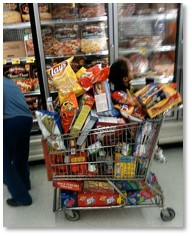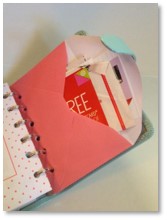 I sometimes spend more time on Quora than I would like to admit. The questions span a wide range of topics and I often see answers that interest me. While some of the political questions come from obvious trolls, others are thought- provoking.
I sometimes spend more time on Quora than I would like to admit. The questions span a wide range of topics and I often see answers that interest me. While some of the political questions come from obvious trolls, others are thought- provoking.
When I think I can add wisdom to the discussion, I comment. People seem to like my comments and I sometimes get hundreds of Upvotes. Yesterday I found this question:
“To eat on a food stamps budget, what kind of meat is recommended buying? I guess deli meat for lunch and ground beef for dinner.”
While I did not submit an answer, I enjoyed reading responses from people who had excellent—and detailed—suggestions about how to stretch a food dollar when shopping while getting the best nutritional value. Way to go, Quora readers!
Learning to Shop Wisely
The conversation reminded me of my first experience of food shopping without Mom. I was in college and had an apartment with three other students in Boston’s Dorchester neighborhood. We took turns cooking and each person put dinner on the table one week a month.
While all four of us grew up in Massachusetts, we came from different ethnic and economic backgrounds. We didn’t have a lot of money and were pretty good at getting the most value for what we spent. No one sprung for lobster or steak and we ate a lot of hamburger. What I saw in the carts of the other shoppers astounded me, however. These folks had even less than we did and many paid with food stamps.
 Yet, at the checkout line, I saw a lot of packaged processed “foods” like Hamburger Helper, that are both expensive and lacking in nutrition. Not to mention including many additives and preservatives. These shoppers bought pre-pressed hamburger patties with a lot of fat instead of lean hamburger in bulk and making the patties themselves. That meant they got less for meat for their money along with worse quality and lower nutritional value.
Yet, at the checkout line, I saw a lot of packaged processed “foods” like Hamburger Helper, that are both expensive and lacking in nutrition. Not to mention including many additives and preservatives. These shoppers bought pre-pressed hamburger patties with a lot of fat instead of lean hamburger in bulk and making the patties themselves. That meant they got less for meat for their money along with worse quality and lower nutritional value.
The carts held a lot of chips and cookies and soda. They did not have many fresh fruits and vegetables. It became clear that these shoppers had never learned to buy food wisely,
I often wanted to say something but figured these mature women, mostly people of color, would not welcome a lecture from a skinny, know-it-all, white college kid.
Learning by Example
 I grew up in Somerset, MA, which was then a small, largely middle-class town. Most residents fit in the same economic boat and few rich kids went to the town’s high school.
I grew up in Somerset, MA, which was then a small, largely middle-class town. Most residents fit in the same economic boat and few rich kids went to the town’s high school.
My mother, a very smart woman, fed us exceedingly well on a weekly food budget that she and my father put aside every week when he got paid. Once he cashed his paycheck, they sat down at the table and allocated the bills to the different envelopes, as needed.
They had envelopes for everything and the Food envelope was hers to spend. Not only did she shop wisely, After the week’s food shopping, Mom usually had a little left over for small things that her four kids needed (or wanted).
Five Steps to Smart Food Shopping
 She accomplished this major financial feat in five ways:
She accomplished this major financial feat in five ways:
- Clipping coupons for everything that we ate or might eat, or she could use later on.
- Reading the supermarket circulars and shopping for the weekly specials at each one. (My favorite market had live rabbits outside in an enclosure that looked like a little town.)
- Cooking a lot of fish and shellfish. With the exception of lobster, those items were cheap back then, much less expensive than beef. We ate clam chowder, broiled scallops, baked fish and other delicacies as a matter of course.
- Watching cooking shows like Julia Child’s The French Chef and copying the recipes. Without an internet or email, she did it the hard way. Then she tested the recipes on us, turning ordinary food into gourmet meals by adding a few herbs or a bit of wine. Or a lot of butter.
- Planning and buying ahead to get what was available on special or in bulk.
Mom would never have bought pre-pressed anything. Not only did she recognize that prepared food was not economical, but it would also have offended the pride she took in cooking well. Granted, she was a stay-at-home mother who didn’t have to balance housekeeping and cooking with a full-time job. She could shop early in the week when selections were better. But Mom also didn’t have unit pricing, a microwave, a slow cooker or McDonald’s to make feeding us any easier.
Clueless About Adulting
Now we live in a time when kids seem to know very little about how to handle money well. Or, for that matter, how to do the things that most adults accept as part of being a grownup. This is so stressful for them, they call it “adulting.”
 No one seems to have taught them how to manage their finances, compare unit prices, sew a button, open a bank account, or make scrambled eggs.
No one seems to have taught them how to manage their finances, compare unit prices, sew a button, open a bank account, or make scrambled eggs.
They don’t seem to realize that buying the latest smartphone, getting a tattoo, and doing tequila shots on Saturday night are expensive but not essential. Or that saving some money any way you can, like Mom having a little extra in the Food envelope, is important.
I don’t remember Mom sitting down and telling me any of this. But I went food shopping with her before I was old enough for school — and I started First Grade at five. I was the youngest, so my siblings were already in school and I got a little one-on-one time. I’m sure I went with her when I was older but this is what I remember best. Mom would explain what she was doing as we went along and I learned from her example. Then I got to visit the rabbits.
Real-Life Home Economics
We had Home Economics in high school but all that class taught me was how to sew a cobbler’s apron (epic fail) or make popcorn balls (irrelevant). Nowadays, young people need a course in Life Skills. You can even call it Adulting 101. The class would include many things that my generation didn’t need to know, like how to cook a nutritious dinner when Mom is traveling and Dad is stuck in a traffic jam. It could explain the real cost of taking out a loan or how those Starbucks macchiato coffees add up over time. They could show you what a tattoo looks like after 50 years of aging.
Young people call this adulting because it means both taking responsibility for yourself and doing tasks that their parents used to do for them—and probably for far too long.
Let’s hope that a course like that would include shopping for food so you get the most and the best for your money. Mom would approve.
